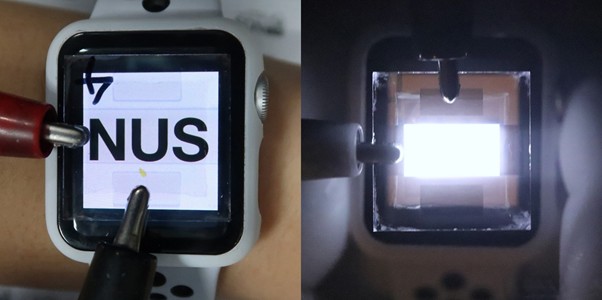
NUS researchers have developed transparent near-infrared light-emitting diodes (LEDs) that could be integrated into the displays of smart-watches, smart-phones and augmented or virtual reality devices.
A research team led by Prof TAN Zhi Kuang from the Department of Chemistry and the Solar Energy Research Institute of Singapore (SERIS), NUS has developed efficient NIR LEDs that are highly-transparent, with an average transmittance of more than 55% across the visible spectrum. Their devices employ an ultra-thin layer of a novel perovskite-based semiconductor, which is capable of intense and efficient light emission. This perovskite semiconductor also benefits from low-cost processing and versatile integration into a variety of device substrates. By further replacing the traditional non-transparent metallic electrode with a new electrode comprising layers of ultra-thin metals and conductive oxide, the team is able to achieve an optimal balance of high optical transparency, low electrode resistance, and efficient charge injection that are required for the LED to generate light efficiently.
Prof Tan said, “NIR technologies have made significant inroads into wearable, mobile, gaming and augmented reality gadgets in recent years, and have seen uses ranging from security to health-tracking and 3D sensing. We believe that our transparent NIR LED concept could open up an exciting array of new advanced functionalities in small wearable devices which were previously unattainable with traditional III-V semiconductor LED chips. For instance, we may one day be able to apply this technology in smart-watches for facial recognition, or use this for high-security contactless payment.”
As a proof of concept, the team has demonstrated a transparent LED that is overlaid across a smart-watch display to provide intense NIR illumination (see figure above).
A transparent perovskite LED overlaid across a smart-watch display to show high optical transparency, neutral colour and bright NIR electroluminescence when turned on. [Credits: Nature Communications]
Read more about their new discovery here.
